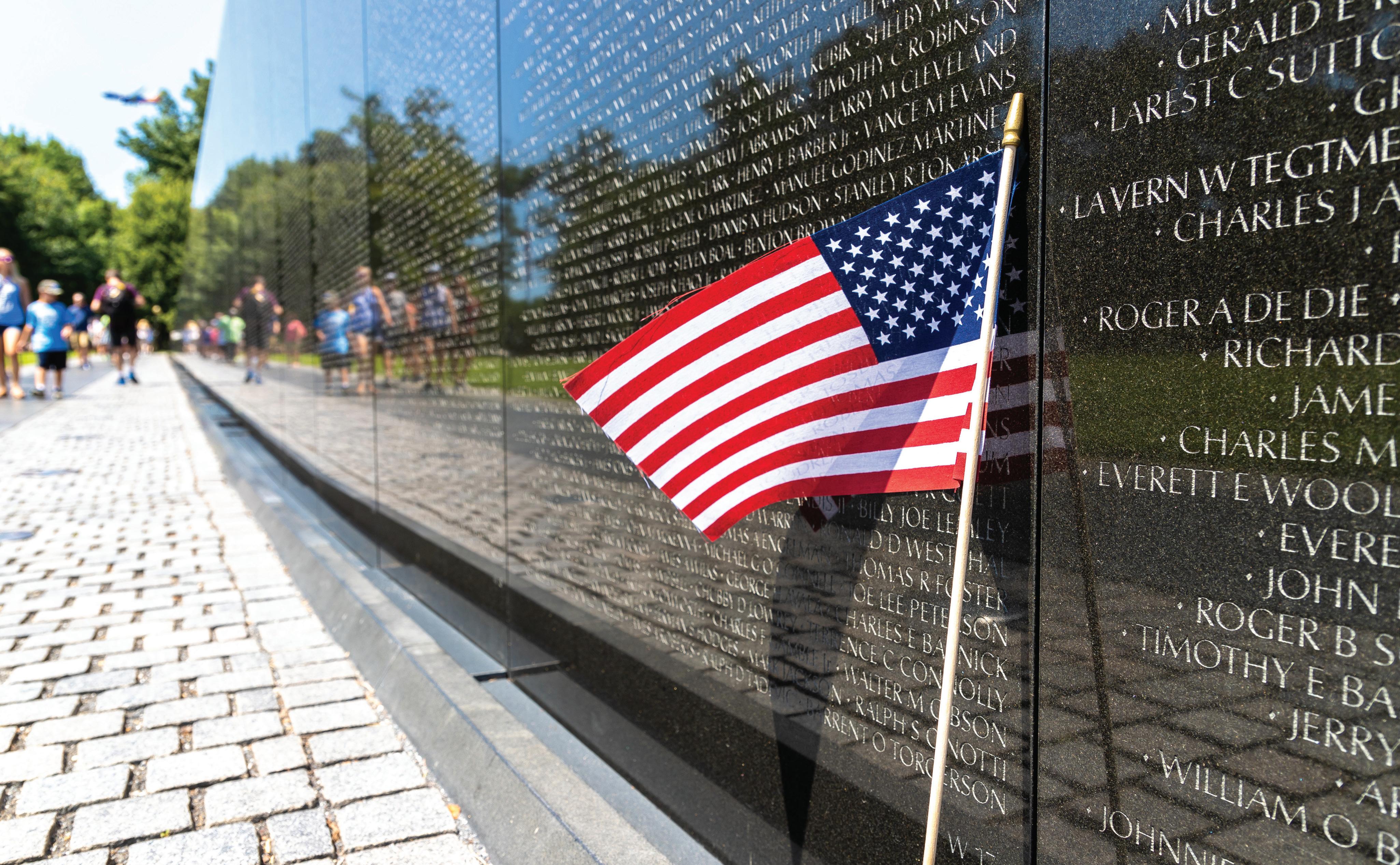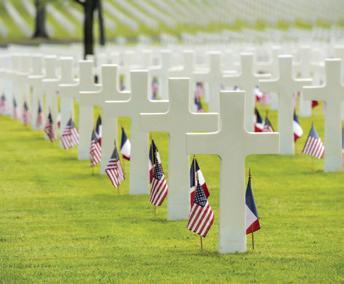












By Michele E. Buttelman Signal Staff Writer
As we age one of the consequences we may encounter, especially in the sunny Santa Clarita Valley, is the need for cataract surgery. It’s hard to come to grips with the fact we may be at the age that we need a surgery we associate with our parents and grandparents.
The idea of any kind of surgery, especially anything to do with our eyes fills most people with dread.
However, I just had my second cataract surgery on May 6, and the difference in my vision is nothing short of a miracle. I see colors more vibrantly, I can see farther and clearer when driving and everything looks brighter.
The National Eye Institute reports that cataracts are extremely common.
More than half of all Americans age 80 or older either have cataracts or have had surgery to get rid of cataracts.
The Mayo Clinic said cataracts, which is a cloudiness in the lens of the eye, is mostly associated with aging due to normal eye changes that begin to happen after age 40. That is when normal proteins in the lens start to break down. This is what causes the lens to get cloudy. People over age 60 usually start to have some clouding of their lenses.
In the beautiful SCV the sun can be a factor in developing cataracts.
The National Institute of Health reports that spending a lot of time in the sun, especially without sunglasses that protect your eyes from damaging ultraviolet rays, can be a factor in developing cataracts.
Cataracts can also run in families. Diabetics and smokers also have a higher risk of developing cataracts at
younger ages.
Because cataracts usually grow slowly it is common not to notice the subtle changes in eyesight that can include:
• Cloudy or blurry vision.
• Faded colors.
• Problems seeing or driving at night.
• The need for additional light to read or do other tasks.
• Lamps, sunlight, or headlights seem too bright. You notice more “glare” from bright lighting.
• You see a halo around lights.
Cataract surgery is one of the most common operations in the United States, and one of the safest according to the National Institute of Health.
Nearly four million cataract surgeries are performed each year.
The rate of complications, or infection, is reported by the National Eye Institute at between 0.13% and 0.7%.
During cataract surgery, performed by an ophthalmologist, a small incision is made and suction is used to remove the cloudy lens, which is replaced with an artificial, intraocular, plastic lens
The surgery is performed on an outpatient basis, usually at a center dedicated to eye surgeries.
During my cataract surgery I was first treated with numbing eyedrops, then had an IV inserted in my arm where I received a light sedation.
The anesthesiologist described it as a “three-margarita” experience. I was a bit concerned because for me, three margaritas could result in the “spins.”
However, I felt nothing more than a peaceful calmness.

You never are asleep during the surgery and, the best part, the surgery is completely painless.
I thought it would be weird, uncomfortable or disturbing to be awake during the surgery, but was surprised to find I felt comfortable and barely remember it.
From beginning to end, the entire process took about an hour. The procedure itself lasted maybe 20 minutes, at the most.
The most complicated part of cataract surgery is choosing the intraocular lens.
I was offered the option of a lens for distance vision or near (reading) vision.
I chose distance, the most recommended option.
People with certain eye conditions can also opt for “advanced” lenses that correct for certain eye conditions, as well as multifocal lenses that allow for both near and distance vision. However, insurance usually does not cover the cost of these “advanced” lenses.
My eye doctor said I wasn’t a candidate for those upgraded lenses, which was a relief, as they can cost upwards of $2,000.
Medicare covers cataract surgery that is performed using traditional surgical techniques or using lasers. Although Medicare covers basic intraocular lens implants, it does not cover more advanced implants.
Most surgery centers require that the patient have someone drive them home, more for the anesthesia rather than the surgery. Patients begin applying postoperative drops, usually to prevent infection and inflammation, the same day and must wear an eye shield at bedtime for a week after surgery.
My post-op instructions also included the prohibition for lifting anything heavy for a week after surgery.
After I left the surgery center my vision was somewhat blurry and I saw very bright halos around lights and anything that had a bright reflection (like the chrome trim on a car). That phenomenon continued the next day, when I had to return to the eye doctor for a follow up.
However, by the second day after surgery, I no longer saw the halos. I kind of missed the effect, I had found the halos “pretty,” making every light seem like it was surrounded by a large feathered fan.
At my one-week follow-up I was told my vision was “excellent” after I was able to read down to the fifth line of the eye chart.
My one-month follow-up appointment will be held on June 11.
Some people report the feeling of “something” in their eye in the days following cataract surgery, but I did not have that sensation for either of my two cataract surgeries. My eyes felt normal with no pain or any hint that I had surgery.
Three years after the Civil War ended, on May 5, 1868, the head of an organization of Union veterans — the Grand Army of the Republic — established Decoration Day as a time for the nation to decorate the graves of the war dead with flowers. Maj. Gen. John A. Logan declared that Decoration Day should be observed on May 30. It is believed that date was chosen because flowers would be in bloom all over the country.
The first large observance was held that year at Arlington National Cemetery, across the Potomac River from Washington, D.C.
The ceremonies centered around the mourning-draped veranda of the Arlington mansion, once the home of Gen. Robert E. Lee. Various Washington officials, including Gen. and Mrs. Ulysses S. Grant, presided over the ceremonies. After speeches, children from the Soldiers’ and Sailors’ Orphan Home and members of the GAR made their way through the cemetery, strewing flowers on both Union and Confederate graves, reciting prayers and singing hymns.
Local springtime tributes to the Civil War dead already had been held in various places. One of the first occurred in Columbus, Mississippi, April 25, 1866, when a group of women visited a cemetery to decorate the graves of Confederate soldiers who had fallen in battle at Shiloh. Nearby were the graves of Union soldiers, neglected because they were the enemy. Disturbed at the sight of the bare graves, the women placed some of their flowers on those graves, as well.

Decoration Day was established three years after the end of the Civil War. It was a time to decorate the graves of the war dead with flowers. ©ADOBESTOCK
South claim to be the birthplace of Memorial Day in 1866. Both Macon and Columbus, Georgia, claim the title, as well as Richmond, Virgina. The village of Boalsburg, Pennsylvania, claims it began there two years earlier. A stone in a Carbondale, Illinois, cemetery carries the statement that the first Decoration Day ceremony took place there on April 29, 1866. Carbondale was the wartime home of Gen. Logan. Some 25 places have been named in connection with the origin of Memorial Day, many of them in the South where most of the war dead were buried.

Today, cities in the North and the
In 1966, Congress and President Lyndon Johnson declared Waterloo, New York, the “birthplace” of Memorial Day. There, a ceremony on May 5, 1866, honored local veterans who had fought in the Civil War. Businesses closed and residents flew flags at half-
staff. Supporters of Waterloo’s claim say earlier observances in other places were either informal, not community-wide or one-time events.
By the end of the 19th century, Memorial Day ceremonies were being held on May 30 throughout the nation. State legislatures passed proclamations designating the day, and the Army and Navy adopted regulations for proper observance at their facilities.
It was not until after World War I, however, that the day was expanded to honor those who have died in all American wars. In 1971, Memorial Day was declared a national holiday by an act of Congress, though it is still often called Decoration Day. It was then also placed on the last Monday in May, as were some other federal holidays.
Gen. Logan’s order for his posts to decorate graves in 1868 “with the
choicest flowers of springtime” urged, “We should guard their graves with sacred vigilance. … Let pleasant paths invite the coming and going of reverent visitors and fond mourners. Let no neglect, no ravages of time, testify to the present or to the coming generations that we have forgotten as a people the cost of a free and undivided republic.”
The crowd attending the first Memorial Day ceremony at Arlington National Cemetery was approximately the same size as those that attend today’s observance, about 5,000 people. Then, as now, small American flags were placed on each grave — a tradition followed at many national cemeteries today. In recent years, the custom has grown in that many families decorate the graves of all departed loved ones.
The origins of special services to honor those who die in war can be found in antiquity. The Athenian leader Pericles offered a tribute to the fallen heroes of the Peloponnesian War more than 24 centuries ago that could be applied today to the 1.1 million Americans who have died in the nation’s wars. “Not only are they commemorated by columns and inscriptions, but there dwells also an unwritten memorial of them, graven not on stone but in the hearts of men.”
To ensure the sacrifices of America ’s fallen heroes are never forgotten, in December 2000, the U.S. Congress passed and the president signed into law “The National Moment of Remembrance Act,” P.L. 106-579, creating the White House Commission on the National Moment of Remembrance. The commission’s charter is to “encourage the people of the United States to give
See MEMORIAL DAY, page 16

By Michael Picarella Signal Staff Writer
The annual Santa Clarita Valley Memorial Day Ceremony is set for Monday, May 26, at Eternal Valley Memorial Park Mortuary in Newhall. Beginning at 10 a.m. on Memorial Day, the public is invited to honor and mourn those who died while serving in the United States military.
According to Bob Kellar, president of the SCV Memorial Day Committee and a U.S. Army veteran, the event will include the customary Condor Squadron flyby, a performance by the Santa Clarita Valley Concert Band and a keynote address from Maj. Gen. Matthew P. Beevers of the National Guard, who is adjutant general of the California Military Department.
“It has been kind of a tradition for many years that we’ve had our congressman speak,” Kellar said during a telephone interview earlier this month.
“We reached out to our new Congressman, (George) Whitesides, and he’s been kind enough to say that he will come. Now, he’s not our keynote speaker. The general will be the keynote speaker. But the congressman will also say a few words, and I’m delighted he’s going to do that.”
Kellar said he was pleased to have Beevers delivering the keynote, adding that it goes with this year’s National Guard theme. He offered some background on Beevers, saying he’d never seen a general who did not have an impressive record. Beevers’ achievements didn’t disappoint.
According to Kellar, Assemblywoman Pilar Schiavo, D-Chatsworth, helped arrange for Beevers to speak. Schiavo is set to introduce the general. Kellar anticipates at least 800 people to turn out for the event. It’ll take place in the upper area of the cemetery near the main building, but Eternal Valley plans to offer golf cart rides to assist guests up and back down the hill. Parking for the event will be allowed throughout the cemetery.
According to Kellar, various Scout troops from around Santa Clarita will go out to the cemetery before the ceremony and place American flags on the grave sites of the veterans there.
“It’s a beautiful sight to go out to the cemetery and see thousands of flags,” Kellar said, “It’s so incredibly
important for the young people, meaning the various Scout troops — both boys and girls — to be able to come out and be a part of this. There’s a recognition of these young people about what has happened in the past so that we have this wonderful country, the United States of America. That’s only because of some things that have transpired in the history of this country. I can’t think of a better way for young people to be able to get an appreciation for it than to be able to participate and assist in placing the flags at the grave sites.”
Kellar expects the Memorial Day ceremony to be about an hour to an hour and 15 minutes long.
According to the event schedule, the Condor Squadron out of Van Nuys Airport, made up of World War II North American AT-6 airplanes, is set to fly overhead in formation earlier in the day. In previous Memorial Day events, there has been the reading of the names inscribed on Eternal Valley’s Veterans Memorial Wall. Kellar said they will not be doing that this year simply because there are now too many names.
“We’ve got about 800-and-some-odd names on that wall,” Kellar said. “It is no longer a 45-minute exercise. But we are looking at how we could possibly modify it in future years, maybe going back and reading the last 100 names that have been inscribed each year.”
Those whose names have been inscribed on that wall, Kellar has said in the past, aren’t necessarily buried at Eternal Valley, but could’ve simply been residents of the area at one time or another.
Kellar reminds people that the Memorial Day event is not just for veterans. It’s for everyone and anyone in the family — even children — to remember and honor the men and women who paid the ultimate price for their country.
“I’ve always had a very strong feeling about the importance of our military, and I’m very honored to have served in the Army,” Kellar said. “I’ve been on this board (SCV Memorial Day Committee) — I took about a two-year sabbatical about a dozen years ago, but other than that, I’ve been on this board since about 1991. This event has been something that I have always felt good about.”
For more information about the event, call Eternal Valley at (661) 259-0800.

Cub Scouts from Troop 494 of Canyon Country salute a flag they placed on the grave of a veteran at Eternal Valley Memorial Park and Mortuary in preparation for Memorial Day last year. SIGNAL FILE PHOTO

The Condor Squadron initiates their ceremonial flyover with World War II AT6 aircrafts for Memorial Day Tribute at Eternal Valley Memorial Park and Mortuary. SIGNAL FILE PHOTO
Presents June 9 - July 26
Enjoy a summer filled with games, songs, crafts, special events and of course – READING! Register yourself or sign-up the whole family to log your reading days and participate in a variety of reading challenges for the chance to win prizes.
By Ken Striplin Santa Clarita City Manager

Wto you by
Tem Laurene

ith the summer season just around the corner, many residents are thinking about staycations or quick getaways; Santa Clarita Transit has you covered. Our Transit system is helping residents and visitors get around safely, efficiently and sustainably. Whether you’re planning a beach day, exploring local attractions or supporting green transportation, there’s something for everyone to enjoy this season.
First up, an annual summer staple, the Beach Bus. Beginning Saturday, May 31, and running through August 31, our Beach Bus makes its anticipated return to offer residents a convenient, stress-free way to get to Ventura Harbor. Whether you’re heading to the coast for some sun, surf or shopping, the Beach Bus eliminates the hassle of parking and is a great way for everyone to enjoy a day at the beach while letting someone else do the driving.
Another popular favorite making its return is the Santa Clarita Summer Trolley, which is starting its operation on May 25, and will continue through September 1. This complimentary service provides easy access from select hotels in our City to popular destinations like Six Flags Magic Mountain and Hurricane Harbor, Old Town Newhall and the Valencia Town Center. This is the perfect way for visitors to explore Santa Clarita’s top attractions without the hassle of renting a car.
Diving into the artistic side of tran-
sit, the City is also showcasing local creativity through the Santa Clarita TAP Card Art Contest. This is a special opportunity for artists in our community to submit original artwork inspired by the City’s Zero-Emission Initiative. The winning design will be featured on the very first, limited-edition Santa Clarita TAP Card, which will be distributed later this year. To submit your artwork and to learn more, please visit SantaClaritaArts. com.
Speaking of zero emissions, we’ve made significant strides in expanding our environmentally friendly transit fleet. The City’s first zero-emission electric vehicle joined the GO! Santa Clarita service in January. This single vehicle reduces as much carbon each month as planting 57 trees and letting them grow for 10 years. This real, measurable impact is only just the beginning.
Looking ahead, Santa Clarita is gearing up to welcome seven hydrogen fuel cell buses to its local transit system in the fall. These buses will provide quiet, clean and efficient service powered entirely by hydrogen, a major step toward our goal of a fully zero-emission transit network.
The City of Santa Clarita and Santa Clarita Transit are proud to deliver forward-thinking, rider-friendly solutions that benefit our residents, visitors and environment. We look forward to seeing you on board this summer.
For more information, visit Santa ClaritaTransit.com.
Ken Striplin is the City Manager for the City of Santa Clarita and can be reached at kstriplin@santaclarita. gov.
By Tony Rizzo
“
Top Gun: Maverick” director
Joseph Kosinski is planning to remake “Miami Vice,” the hit series that ran from 1984-1990 and starred Don Johnson and Philip Michael Thomas. This is despite Michael Mann’s film version bombing in 2006, which starred Jamie Foxx and Colin Farrell. It cost $150 million but only grossed $164.2 million.
I met Johnson in 1969 when he starred with Sal Mineo in a Hollywood theater production of “Fortune and Men’s Eyes.” I remember we did several photo sessions together, and he told me about his aspirations for his future. Forty-four films later and the series “Nash Bridges” (with Cheech Marin), he’s starring in ABC’s “Doctor Odyssey,” which appears to be a hit.
Johnson has been married to Melanie Griffith and dated Nicolette Sheridan, Patti D’Arbanville, Barbra Streisand, Uma Thurman and Penelope Ann Miller. He got back together with Griffith (producing actress Dakota Johnson), and his various relationships gave him five children in total. What a tell all book that’ll make!
Brad Pitt jumped from “F1,” which opens on June 27, into “La La Land” director Damien Chazelle’s “Heart of the Beast.” He’ll star opposite Oscar winner J.K. Simmons and play a former Navy SEAL who is trying to adjust to civilization after surviving the Alaskan wilderness.
Next, Pitt will head to Europe for “The Riders” (directed by “Conclave’s” Edward Berger), in which he searches Europe for his missing wife. Then he’ll follow “The Riders” with Netflix’s “The Continuing Adventures of Cliff Booth,” which was written by Quentin Tarantino.
Pitt’s publicly discussed struggling with what he believes is prosopagnosia (aka “face blindness”) — a neurological disorder that makes it difficult to recognize faces, including people you know. They know him, but he may not know them from Adam!
In 1978, I saw a little stoner film called “Up in Smoke” about two potheads and their marijuana adventures. The stoners were Cheech Marin and Tommy Chong, aka Cheech and Chong. They wanted to make a movie so badly that they were railroaded by Paramount Pictures into a terrible deal for six low-budget films they had to write, produce, direct and star in.
In their current documentary “Cheech & Chong’s Last Movie,” they revealed that the film cost $2 million to make and grossed $104 million. But they were only paid a pair of limegreen shoes and $100, which eventually turned into $25,000 for each of them on the back end. Talk about the short end of the lollipop!
“Up in Smoke” was followed by “Cheech and Chong’s Next Movie” (1980), “Nice Dreams” (1981), “Things Are Tough All Over” (1982), “Still Smokin” (1983), and “Cheech & Chong’s The Corsican Brothers” (1984). They were so naive that you might say their profits went -- what else? — “Up in Smoke!” © 2025 King Features Synd., Inc.


n at i o n: b Lo o d L i n e s E Sun to Tue: 1:10 4 10 7:00 Wed: 1:10 4:10; Thu: 1:10 4:10 7 00
P agued by violent nightmares, Stefanie heads home to track down the

By Camille Lowder Delish.com
We think that Memorial Day is THE official start of summer, so no matter how you’re celebrating, it’s the perfect time to set a precedent for an awesome season ahead. Whether you’re throwing a BBQ, having a picnic or just enjoying a chill outdoor dinner on your grill, you’ve got to do it right. We think the best way to guarantee a stellar meal is to not skimp on the sides — they might be even more important as all those burgers and dogs.
Elote: Mexican Street Corn
Ingredients
6 ears corn, shucked, rinsed
Vegetable oil, for brushing if air frying
1/4 cup mayonnaise
1/4 cup Mexican crema or sour cream
1/3 cup grated cotija cheese
3 tsp. chili powder
Chopped fresh cilantro and lime wedges, for serving For Grilling
Prepare a grill for medium-high heat; heat 5 minutes (or preheat a grill pan over medium-high heat).
Grill corn, turning often, until slightly charred all over, about 10 minutes.
Meanwhile, in a small bowl, mix mayonnaise and crema.
Transfer corn to a platter. Brush with mayonnaise mixture. Top with cotija, chili powder, and

cilantro. Serve warm or at room temperature with lime wedges alongside.
For the Air Fryer
Cut corn to fit in air-fryer basket (you may need to cut cobs in half).
Brush corn all over with oil. Working in batches, arrange corn in basket and cook at 400°, turning halfway through, until tender, 10 to 12 minutes.
Meanwhile, in a small bowl, mix mayonnaise and creama.
Transfer corn to a platter. Brush with mayonnaise mixture. Top with cotija, chili powder, and cilantro. Serve warm or at room temperature with lime wedges alongside.
Ingredients
Kosher salt
1 lb. fusilli or rotini pasta
1/2 cup extra-virgin olive oil, divided
1/2 cup sliced almonds
1/4 cup balsamic vinegar
2 Tbsp. maple syrup
1 Tbsp. Dijon mustard
Freshly ground black pepper

1 lb. fresh strawberries, hulled, sliced
1 small shallot, peeled, thinly sliced
2 cups baby spinach
1/2 cup fresh basil leaves, torn if large
1/2 cup fresh mint leaves, torn if large
6 oz. goat cheese, crumbled (about 1 c.)
Store-bought or homemade balsamic glaze, for drizzling
In a large pot of boiling salted water, cook pasta, stirring occasionally, until al dente according to package directions. Drain and rinse under cold water. Drain again.
Meanwhile, in a small skillet over medium heat, heat 1/4 cup oil. Add almonds and cook, stirring frequently, until fragrant and lightly golden, 2 to 3 minutes. Using a slotted spoon, transfer almonds to a paper towel-lined plate. Reserve oil in skillet; season with salt. Transfer oil to a large bowl and whisk in vinegar, syrup, mustard, and remaining 1/4 cup oil; season with salt and pepper.
To bowl with vinegar mixture, add pasta, strawberries, shallots, spinach, basil, and mint. Toss to coast; season with salt and pepper, if needed. Add almonds and cheese and gently toss to combine. Drizzle with balsamic glaze.
Professionals typically look forward to retirement and the freedom that comes with it. The notion that commuting and deadlines will one day be a distant memory is enough to make anyone excited for retirement. But when the day to leave the daily grind behind arrives, many retirees admit to feeling a little anxiety about how they’re going to find structure.
Retirement is a big transition, and Robert Delamontagne, PhD, author of the 2011 book “The Retiring Mind: How to Make the Psychological Transition to Retirement,” notes that some retirees experience anxiety, depression and even a sense of loss upon calling it a career.
Some of those feelings can undoubtedly be traced to the perceived lack of purpose some individuals feel after retiring. Without a job to do each day, people can begin to feel useless.
Overcoming such feelings can be difficult, but finding ways to build daily structure can make the transition to retirement go smoothly.
• Find something to truly engage in. Professionals who truly enjoy their work tend to be fully engaged, so it’s no surprise if such individuals have a hard time adjusting to retirement. Some may suggest volunteering can help fill the void created by retirement, but researchers with the Sloan Center on Aging and Work at Boston College have found that only those individuals who are truly engaged in their post-retirement volunteering enjoy the psychological benefits of such pursuits.
So before retirees dive right in to volunteering as a means to creating structure, they should first exercise due diligence and find an opportu-

nity they’ll find genuinely engaging.
• Embrace the idea of “bridge employment.” Bridge employment is the name given to the trend that has seen retired individuals take on part-time or temporary employment after they have retired from fulltime working.
COVID-19 has no doubt skewed post-retirement working statistics since the World Health Organization first declared a pandemic in March 2020, but a 2019 survey from the LIMRA Secure Retirement Institute found that 27% of pre-retirees with at least $100,000 in assets planned to work part-time in retirement.
Even part-time work can provide enough daily structure to help retirees feel as though each day is not just a free-for-all.
• Make a concerted effort to be more social. Volunteering and working are not the only ways to create structure in retirement.
A concerted effort to be more social can help retirees fill their days with interactions with like-minded indi-
viduals who may be experiencing the same feelings.
Join a book club, a local nature group that goes on daily or
semi-daily morning hikes or another local community organization. These are great ways to build structure and meet new people.
Retirees can create social media accounts to find local community groups that cater to their interests. Even if it seems hard to believe, plenty of retirees are seeking to create structure in retirement life, and social media can make it easier to find such individuals in your community.
Structure and retirement may seem like strange bedfellows. But many retirees seek structure after calling it a career, and there are many fun ways for seniors to create more organization in their lives. (MC)


Becoming a first-time homeowner is a remarkable achievement, but the journey doesn’t end at closing. With today’s market challenges, making your new house feel like home can seem daunting. The good news: with thoughtful planning and proven DIY tips, you can create a space that’s beautiful, functional and uniquely yours, without stretching your budget.

One of the biggest reasons to DIY? You can save serious dollars. In fact, a 2024 report by NerdWallet showed that on average, DIY projects cost less than half of professional projects.
Before beginning any DIY endeavor, establish your budget and assess what your house needs, prioritizing the most cost-effective yet impactful updates. Take a trip to a local home improvement retailer or do an online search to gauge costs.
Once you have a map of projects in place, plot when you want to tackle each one on the calendar.
Before diving in, ensure you’re investing in an aesthetic that resonates with you versus what is trending online.
magazines on your way out. And, of course, your phone or computer holds a treasure trove of style inspiration, from renovation tutorials on social media to style and décor trends on your favorite brand’s website.
Before getting to work, ensure you have versatile supplies for various projects. The essentials include: a hammer, flathead, Phillips screwdrivers, painter’s tape, and a power drill.
“As you embark on the exciting process of styling your first home, it is essential to determine your personal taste so that it truly reflects who you are,” said DeBoe Harper. “Whether your style leans modern, traditional, industrial, farmhouse, glam, or a combination of a few, understanding your preferences will help you establish the overall atmosphere of your home.”







































“While it’s tempting to cut corners on costs, investing in high-quality products up-front can save you significantly in the long run. Quality materials offer durability and better performance, minimizing the need for frequent replacements or repairs. Think of it as buying peace of mind –a well-chosen faucet, sturdy cabinetry or durable flooring can elevate your home for years to come,” said Danielle DeBoe Harper, senior creative style manager, Moen.
Luckily, there are many places to find inspiration. Try browsing the aisles of a home décor store—what lamps or pillows are you just dying to put in your cart? When visiting a friend’s home, mentally note what you love and what you’d leave. At the grocery store? Pick up a few home décor
Now it’s time to DIY. Not sure how to approach a project? Lean on inspiration from friends and family, use YouTube tutorials to walk you through it, or get instructions from an expert at your local hardware store. Of course, make sure whatever you choose is something that’s safe to DIY.
“One of the first projects I recommend is painting, since it’s a relatively affordable update that can complete-
In neighborhoods across the country, homeowners are getting extra help in their quest for the elusive, perfect lawn.
The secret? An innovation in grass seed technology known as OptiGrowth, promising faster, stronger and more resilient grass - and it’s living up to the hype.
What is the Technology?
A revolutionary, natural seed treatment, OptiGrowth is a unique technology designed to enhance the performance of grass seed, giving it a higher chance of success. It coats traditional grass seed in a protective, moisture-attracting layer designed to retain moisture and kickstart healthy growth without harming the environment. Developed through years of agricultural research, this technology enhances the natural germination process, giving each seed a better chance to sprout, grow and survive early, tough conditions. It uses water more efficiently, develops stronger roots and shoots, and helps seeds survive in drought, poor soil conditions and extreme temperatures.
Unlike traditional uncoated grass seed, this seed is designed to thrive. It’s not genetically modified; it’s a smarter version of existing seeds, treated to improve their natural abilities, which leads to faster growth, better health
Continued from previous page.

and a thicker, more resilient lawn.
One of the biggest advantages of this coated seed is speed. Under ideal conditions, these seeds may germinate faster than untreated seeds. The faster sprouting reduces the vulnerable window when new grass can be overtaken by weeds, dried out by sun or washed away by heavy rains.
Grass seedlings also emerge healthier and develop deeper roots more quickly, setting the stage for a thicker, more resilient lawn.
“New grass is incredibly delicate,” said Troy Hake, owner of Outsidepride.com, an online seed company specializing in a wide variety of high-quality grass seed, flower seeds and lawn and garden-related products at competitive prices. “OptiGrowth provides seeds with a built-in advantage: helping more seed survive and
ly transform the way a room comes together—and even how it makes you feel,” said DeBoe Harper. “You can paint an entire room or update a piece of furniture or cabinetry with a new color. Other high-impact projects that can be done at a lower cost include swapping hardware, like cabinet knobs or pulls, installing a new showerhead, building bookcases, changing the kitchen faucet
thrive. It’s like giving each seed its own personal water bottle and first-aid kit.”
The seed coating absorbs and retains moisture more efficiently around each seed, so homeowners can water less during the critical establishment period when the seed is most vulnerable to drying out. The moisture-holding properties ensure the seed remains hydrated for longer periods, helping it sprout and establish strong roots.
“For areas prone to drought or watering restrictions, that’s a major winboth for homeowners’ wallets and the environment,” Hake said.
While the coated seed is effective in almost any planting situation, it’s especially beneficial in challenging conditions. The coating acts as a shield, protecting the seed from stresses such as temperature fluctuations,
or hanging peel-and-stick wallpaper, all of which can enhance your look almost instantly while boosting DIY confidence.”
For even more DIY renovation tips and inspiration, visit Moen.com. And remember, successful DIY renovation is built on planning, preparation and a willingness to learn. With these tips for first-time homeowners, you can shape a stylish, comfortable space tailored to your needs.
(SPT)
heavy rains and dry spells. New lawns on sloped ground, areas with patchy sun and shade, or lawns planted in late spring or early fall — times when weather can be unpredictable - benefit the most.
These seeds are designed to succeed even when conditions aren’t ideal by improving moisture retention and boosting germination rates. This means less time reseeding, rewatering and repairing your lawn.
However, Hake notes that in perfect conditions — rich soil, regular rain, mild temperatures — traditional high-quality grass seed can still perform well.
“If you’re planting in ideal conditions and you can baby the lawn with watering and care, you might not need OptiGrowth,” Hake said. “But in most cases, perfect conditions are rare.”
As innovations like OptiGrowth make their way into more products, it’s clear the future of lawn care is working smarter, not harder. These seeds have a built-in advantage - they grow faster, stay hydrated better, have fewer bald spots, require less reseeding and survive tougher conditions, leading to a greener, healthier lawn requiring less effort from you.
For more information, visit outsidepride.com.(Family Features)




















































































































































































































































































































































































Synthetic Lawns
Window Cleaning
Window Company
Window Coverings
Health & Fitness
Acupuncture
Audiologist
Cancer Treatment Center
Cardiologist
Children’s Dentist
Children’s Fitness Center
Chiropractor
Cosmetic Dentistry
Cosmetic Surgeon
Cross Fit Gym
Dance Studio
Dentistry
Dermatologist
Esthetician
Family Practice
Fitness Center / Gym
Golf Course
Gymnastics Center
Hair Removal
Hospital
Hypnotherapist
Imaging Services
Internal Medicine
Lasik Surgery
Life Coach
Martial Arts
Medical Center
Medical Spa / Rejuvenation
Optometrist
Oral Surgeon
Orthodontist
Orthopedist
Outpatient
Periodontist












































































































































Assisted Living / Retirement Comm
Auto Paint and Body Shop
Auto Repair
Auto Stereo
Awards / Trophies
Bail Bond Company
Bank
Barber Shop
Beauty Salon
Boutique Hotel
Charter School
Child Care Center
Cleaning Company (Commercial)
College
Commercial Real Estate Company
Computer Repair
Credit Union
Escrow Company
Executive Suites and Office Rental
Limousine/Town Car
Mortuary
Moving Company
Music School
Party Rentals
Performing Arts School
Pet Groomer
Pet Hospital
Continued from page 6
something back to their country, which provides them so much freedom and opportunity” by encouraging and coordinating commemorations in the United States of Memorial Day and the National Moment of Remembrance.
The National Moment of Remembrance encourages all Americans to pause wherever they are at 3 p.m. local time on Memorial Day for a minute of silence to remember and honor those who have died in service to the nation.
As Moment of Remembrance founder Carmella LaSpada states, “It’s a way we can all help put the memorial back in Memorial Day.”
Courtesy U.S. Department of Veteran Affairs.
Pet Trainer
Photographer
Place to Volunteer
Preschool
Printing & Graphics Company
Private School
Real Estate Company
Religious School
School District
Security Services
Senior Care
Summer Camp
Tanning Salon
Tattoo Shop
Temp Agency
Tutoring Center
Web Design Company
Wedding Coordinator
Shopping
Balloon Design
Bicycle Store
Boat Sales
Boutique
Bridal Shop
Car Wash
Children’s Clothing Store
Custom Framing
Day Spa
Dealership Service Department
Dry Cleaners
Floral Arrangements
Golf Equipment & Supply
Hotel
Jewelry Store
Luxury Car Dealership
Massage
Men’s Clothing Store
Motorcycle Dealership
Music Store
Nail Salon
New Car Dealership
Nursery
Off Road Dealership
Pawn Shop
Pet Store
Pharmacy
Retail Wine Shop
RV Sales
Self Storage Facility
Shoe Store
Tire Store
Used Car Sales
Women’s Clothing Store
By Leon Worster Signal Contributing Writer
In 1915, inspired by the poem “In Flanders Fields,” Moina Michael replied with her own poem:
“We cherish too, the Poppy red That grows on fields where valor led, It seems to signal to the skies That blood of heroes never dies.”
She then conceived of an idea to wear red poppies on Memorial day in honor of those who died serving the nation during war. She was the first to wear one, and sold poppies to her friends and co-workers with the money going to benefit servicemen in need.
Later a Madam Guerin from France was visiting the United States and
learned of this new custom started by Michael. When she returned to France she made artificial red poppies to raise money for war orphaned children and widowed women. This tradition spread to other countries. In 1921, the Franco-American Children’s League sold poppies nationally to benefit war orphans of France and Belgium. The League disbanded a year later and Madam Guerin approached the VFW for help.
Shortly before Memorial Day in 1922 the VFW became the first veterans’ organization to nationally sell poppies. Two years later their “Buddy” Poppy program was selling artificial poppies made by disabled veterans. In 1948 the US Post Office honored Ms. Michael for her role in founding the National Poppy movement by issuing a red 3 cent postage stamp with her
likeness on it.
Memorial day history couldn’t be complete without the birth of the the “National Moment of Remembrance”, which was a resolution passed on Dec 2000 which asks that at 3 p.m. local time, for all Americans “To voluntarily and informally observe in their own way a Moment of remembrance and respect, pausing from whatever they are doing for a moment of silence or listening to ‘Taps.”

Heartworms are one of the most common and serious health threats faced by pets. According to the American Heartworm Society, more than a million U.S. pets are infected with heartworms, and incidence numbers are rising—even though heartworms are easily prevented. To equip pet parents to provide the protection their four-legged family members need this summer and year-round, the American Heartworm

Society is sharing five vital facts about this deadly threat.
1. A single infected mosquito can spread heartworms to multiple pets.
Heartworms aren’t spread from one pet to another. Instead, they are transmitted when a mosquito feeds on an infected animal, then later feeds on other susceptible animals and pets.
2. Heartworms are found throughout the United States. One factor supporting broader transmission is the practice of transporting homeless dogs


for adoption from areas of the country where heartworms are extremely common to locales that formerly had few cases.
3. Heartworms aren’t just going to the dogs. While dogs are highly susceptible to heartworm infection, cats and ferrets get heartworms, too. One thing all three species have in common is that they can become very ill, and even die, if infected with heartworms.
4. There’s no “season” for heart-
worms. While the risk of heartworm spread is greatest from spring through fall, experts advise that pets be maintained on heartworm prevention yearround.
Estimating when the first and last mosquito of the so-called season will appear is a dangerous guessing game, For more information on heartworm prevention and management, visit heartwormsociety.org. (SPT)
























































































Month after month I read complaints regarding the Chiquita Canyon Landfill, and Gary Horton (column, March 19) demands “A Call for Action.” Bold, Gary. So just exactly what sort of action do you propose? Declaring a “state of emergency”? What will that accomplish? Probably not much more than what we’re seeing right now, because that’s not the solution.
Now, may I be so bold as to tell y’all what exactly needs to be done, and I see myself as professionally qualified to make such a statement.
During my 38 years as a mechanical engineer at the L.A. Department of Water and Power, I spent seven years in the Environmental and Governmental Affairs Section. That’s the group that deals with hazardous materials and waste issues — everything from underground transformer oil and fuel tanks to contaminated soils and aquifers to asbestos abatement to landfills.
This might border on sarcasm, but there’s a federal agency known as the “EPA,” and it is responsible for dealing with “Superfund” sites. The only way to deal with Chiquita is to have it declared a Superfund site, and there’s a specific bureaucratic process involved in that. The real adventure starts here: tinyurl.com/v7y2dshh.
That’s the National Priorities List. The NPL guides EPA in determining which sites are so contaminated as to warrant further investigation and cleanup. Hazardous waste sites become eligible for Superfund cleanup when EPA receives a report of a potentially hazardous site from an individual, state government, or federal agency. Did you read that? An INDIVIDUAL can do it.
You want action at Chiquita Canyon? That’s the action that needs to be taken, so stop complaining to the local leaders who have failed you, get ready to work, and get on with it.
Arthur Saginian Santa Clarita
By David Hegg
On this Memorial Weekend, we intentionally set aside critical time for sincere reflection to “memorialize” those who gave their lives in military service to the United States of America. They joined, trained and went in our place for our benefit, adding the currency of their lives to the ongoing payment demanded for our liberty.

But while the hamburgers, hot dogs, chicken and ribs are sizzling on the barbecue, we must consider what we are memorializing. What is it about these brave men and women who died in American uniforms that merits a day of reflection and gratitude? Here are a few suggestions for your consideration.
They understood that privilege does not negate responsibility. It once was understood that “from those to whom much is given, much is expected.” In years past, many left “privileged” positions to defend the good life they and others had come to enjoy by donning their country’s uniform. They did not allow comfort and convenience to keep them from doing the right thing for God and country. We could say their foundational ethic, their innate sense of right and wrong, did not locate personal wealth and success above the well-being of their neighbors. When the call came to bear arms against those who would destroy life and liberty, they answered it out of a deep-seated passion to do what was right.
They went, knowing the path of truth and honor would be extremely difficult … and they went anyway. We increasingly live in a society that considers the easiest path the best way. When we are inconvenienced, we express outrage. When our rights are stepped on, we cry out. And when someone else offends us, we scream, yell, and too often litigate. We have become a nation of crybabies, always on the lookout for an issue over which to vent our supercilious disdain.
challenges. They knew how to work hard, to keep going when things got bad. They kept running when weary, and when they did fail, they didn’t blame it on anyone else. These were the men and women who, understanding their future was shrouded in the unknown, packed up their courage and said, “I’ll go where America needs me.” They understood the welfare of the many as more important than their own. Today, we are witnessing the rise of individualism at a pace unknown in our country. We are fast becoming a nation of selfish, pragmatic individuals so intent on personal success and satisfaction that the ethic of looking out for the other guy has become a thing of derision. We think of ourselves, first, foremost and finally, and frankly, it is killing us. Those we remember this Memorial weekend had plans and dreams, but not at the expense of the call to love their neighbors. They knew they were part of something bigger than themselves, and when that something needed defending, they moved to do it with honor out of a deep sense of duty and love for America’s ideals.
They understood that each individual and each generation must do their part to uphold America’s ideals and foundational values. And herein lies the most significant lesson we can learn. We memorialize those who died in service to us because their courage and loyalty to the fundamental American ideals have given us the privileges we enjoy today. They believed in something tangible and honorable, and they put their lives on the line to defend those beliefs, even to the point of death.
Submit a Letter to the Editor Include name, address & phone. E-mail: letters@signalscv.com.
Those we memorialize today looked hardship, deprivation, fear and even death in the face, and went anyway. As my father would have said, they had moxie. They had grit. They were tough at the core of their souls, having already stood up to and battled other life
So, as we remember, reflect, and thank our God for those who gave the last full measure of devotion, we also must consider what our God is asking of us. May this Memorial weekend be a time of gratitude, remembrance, and corporate thanksgiving for God’s blessings. But may we also consider the part we all play in being a people and a country that can genuinely warrant His continued blessing. Have a thoughtful and joyful Memorial Day!
Local resident David Hegg is senior pastor of Grace Baptist Church. “Ethically Speaking” appears Sundays.


